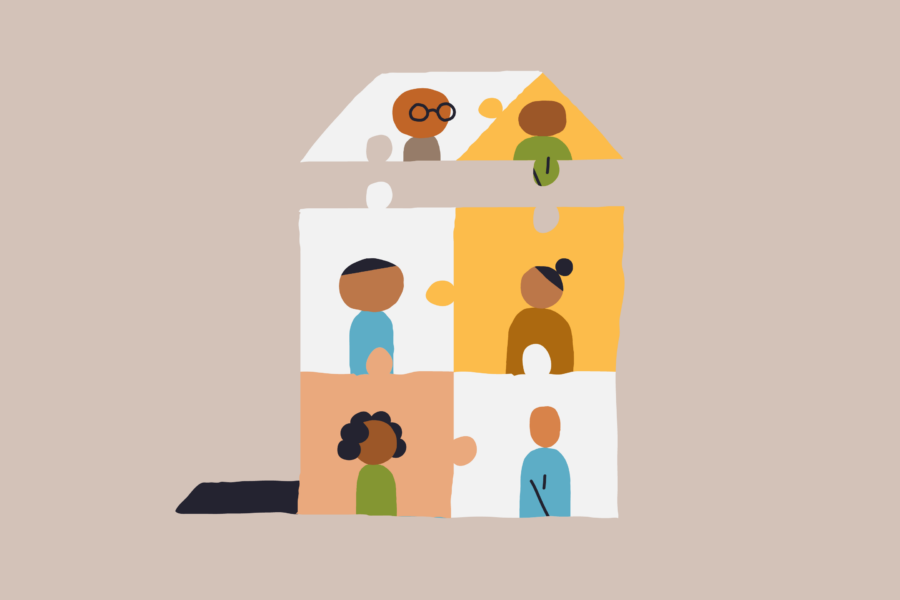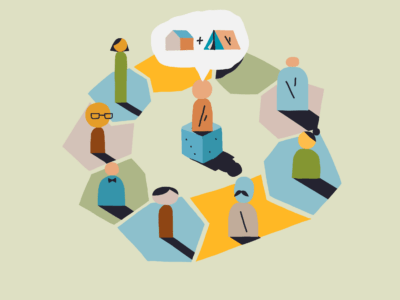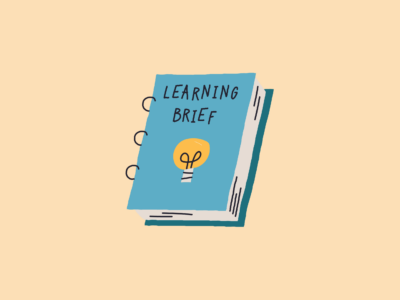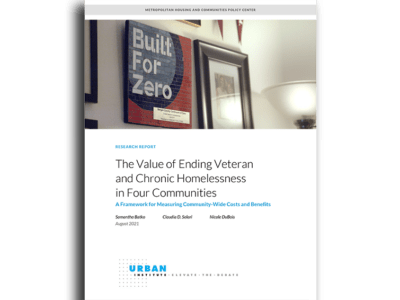Our Aim
By 2026, communities across the country will have proven it is possible to make progress on and achieve key indicators of an equitable homeless response system.
Our Approach
Solving homelessness requires, by definition and design, eliminating inequality in outcomes.
We aim to make homelessness rare and brief for everyone. Built for Zero’s framework for reducing homelessness all the way to functional zero embeds a commitment to achieving equitable outcomes at each stage of the process of being reconnected to a stable home.
Working with individuals with lived experience of homelessness, service providers, and leaders in equity, we co-created a framework to validate fairness within the system. The framework looks at qualitative and quantitative measures around:
1. Decision-making power. People impacted must have real influence over the system’s design.
2. Lived experience. People with firsthand experience of homelessness and experience accessing homeless services must be part of the process.
3. Quality data. Communities must have demographic data to meet quality data standards.
4. System outcomes. Communities must proactively address and effectively reduce disparities in outcomes overall and at key stages of the housing process.
Progress
ORS Impact found that in 2023, roughly 75% of the Built for Zero communities surveyed have begun to take specific action to reduce disparities in system outcomes.
Communities are actively analyzing disaggregated data to identify disparities — an essential first step.
Many communities focus on analyzing housing placements, access to services, and whether the demographics of people being served are reflective of the overall population of people experiencing homelessness. Quality data is crucial to this analysis, and Built for Zero coaches support this process.
As one community leader commented, “All of our data is broken out by key demographics, but also equitable housing outcomes. So, everything — any housing outcomes that we’re checking, programs, in the shelter, our own Homeless to Housing — everything is broken out to make sure that nothing is skewing in the wrong direction.”
Specific actions taken by communities based on their data include incorporating equity-related requirements as part of funding awards, testing assessment tools for bias, developing culturally-informed strategies for serving target populations, and prioritizing funding for groups that have been historically underserved.
Beyond using their data to understand and correct disparities, Built for Zero communities are focused on resolving gaps in outcomes as a way to drive action and steer their internal decision-making processes.
ORS Impact found that approximately one-third of communities interviewed have taken the step of creating a committee or workgroup specifically to address ensuring access for all individuals. One-fourth are exploring strategies to diversify their own staff, leadership, and/or governing bodies. And about 20% have engaged outside experts, such as consultants or researchers, for guidance in their efforts.
To that end, Community Solutions has worked hand-in-hand with communities to better align local and regional efforts with Built for Zero’s framework for achieving an equitable system. We’re guiding them to operationalize the framework, embed it in their work, track system-level indicators over time, and expand the participation and influence of diverse groups with lived experience with homelessness in decision making.

Beyond using their data to understand and correct disparities, Built for Zero communities are focused on resolving gaps in outcomes as a way to drive action and steer their internal decision-making processes.
Challenges and Learnings
Communities remain uncertain about best practices.
While analyzing their data to surface disparities and explicitly prioritizing corrective action are the starting points, many communities remain hesitant to go beyond studying the problem. Communities often lack three things that would spur more rapid progress: skills, time, and confidence.
Community teams desire more training on what constitutes best practices — for those specifically leading their equity work and for organizational leaders — so that implementation is not stymied by miscommunication, uncertainty, or conflicting priorities.
And while communities have assigned staff to the issue, it is typically on top of many other responsibilities. Dedicated capacity is needed, such as time written into job descriptions to monitor and correct-course on disparities.
Communities are actively seeking the expertise and guidance of people with lived experience of homelessness, but not always effectively.
From identifying gaps in services to highlighting opportunities to improve outreach, the voices of people with lived experience can be invaluable. However, simply making room for them at the table isn’t always enough to ensure their participation has weight and influence.
Community Solutions has prioritized the meaningful involvement of people of color with lived experience with homelessness on community teams, both by increasing their representation and by ensuring their influence. However, some communities remain hesitant to shake up existing norms and structures.
Read more from our 2023 Impact and Learning Report

The future we can build together

Our path toward a tipping point
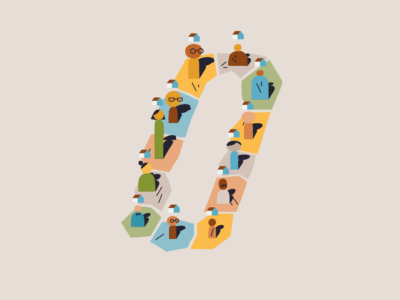
Helping communities solve homelessness
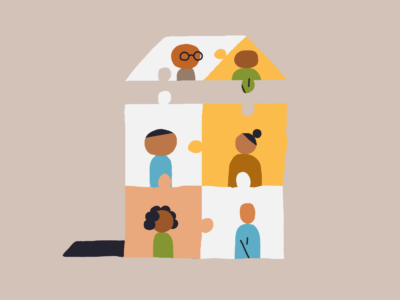
Supporting equitable homeless response systems

Solving key data and collaboration challenges

